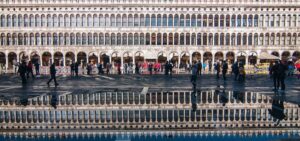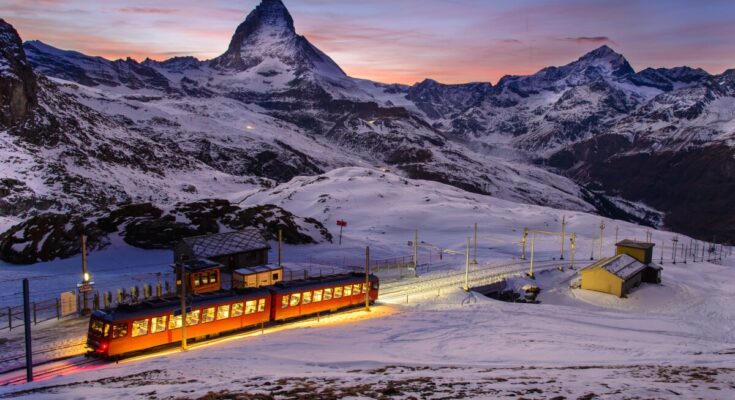1-Greece

Located in southeastern Europe, Greece as an independent nation is young, existing since the 19th century. Its civilization, however, is one of history’s oldest and most influential, credited with creating the concept of democracy as well as the ancient Olympic Games, and laying Western foundations in science, the arts and philosophy.
Greece occupies the southernmost part of Europe’s Balkan Peninsula, as well as a collection of islands that dot the Aegean, Ionian and Mediterranean seas. Its landscapes of mountains, hills and coastline and its rich cultural heritage make it one of the most visited countries in the world.
Greece broke away from the Ottoman Empire and declared independence in the early 19th century. A referendum in 1974 abolished the monarchy and created the parliamentary republic that exists today. The country has a free-market economy with some government involvement. Fueled by the tourism industry, services comprise the largest economic sector in the country, both for employment and contribution to the Greek gross domestic product. Shipping, industrial production and agriculture are other significant sectors of the economy.
2-New Zealand
Today, 70 percent of Kiwis, a common term for the people of New Zealand after a native flightless bird, are of European descent. A sense of pride has surged among the Maori, the country’s first settlers who now account for about 14 percent, as homeland grievances become more openly addressed.

Though the British monarch remains head of state, New Zealand has operated under an independent parliamentary democracy led by a prime minister since its independence in 1907. In 2017, Prime Minister Jacinda Ardern led the progressive Labour party to victory and became the youngest female leader in the world.
3-Italy

Italy is a south-central European country, whose boot-shaped borders extend into the Mediterranean Sea. The country’s historical cities, world-renowned cuisine and geographic beauty make it a popular destination for more than 40 million tourists each year. The nation is home to Mount Etna, Europe’s tallest and most active volcano, and houses two countries within its borders – the Vatican and San Marino.
Italy’s history started with the Etruscans, an ancient civilization that was eventually supplanted by the Romans in the third century B.C. Italy’s city-states were the first to embrace the European renaissance. The country became unified in the 19th century.
Italy is a republic with more than 60 million people. Its capital, Rome, is its largest city. About 80 percent of Italy’s population is Christian, with most people identifying as Roman Catholic. But about 20 percent of people claim to be atheist or agnostic – despite living in the Pope’s backyard.
4-Switzerland
Switzerland, officially called the Swiss Confederation, is a small country in Central Europe made up of 16,000 square miles of glacier-carved Alps, lakes and valleys. It is one of the world’s wealthiest countries, and has been well-known for centuries for its neutrality.
The Swiss Confederation was initially founded in 1291 as a defensive alliance among cantons. In 1499, the confederation became independent from the Holy Roman Empire. In 1848, a new constitution turned the confederation into a centralized federal government, ending a period of conflict. Since then, the country has enjoyed relative tranquility.

Switzerland has low unemployment, a skilled labor force and one of the highest gross domestic products per capita in the world, according to the CIA World Factbook. The country’s strong economy is powered by low corporate tax rates, a highly developed service sector led by financial services and a high-tech manufacturing industry.
Switzerland is a federal republic made up of 26 cantons and an administrative capital in Bern. Most of its citizens live in towns and cities, the most populous of which is Zurich – the most cosmopolitan of the country’s cities. The country prides itself on its diversity, and is home to regions with distinct cultural identities. German, French, Italian and Romansh languages all enjoy national status.
5-Spain
A number of independent kingdoms united in 1492 to form the Kingdom of Spain, a cultural patchwork that continues to shape the modern nation’s dynamic identity. Spain comprises much of the Iberian Peninsula, which it shares with Portugal on the southwestern edge of Europe. It also includes the Balearic Islands in the Mediterranean Sea, the Canary Islands in the Atlantic Ocean and two enclaves in North Africa.
Maritime strength and colonial wealth established Spain’s position as a global leader through the 16th and 17th centuries, a standing that declined as the nation lagged behind great global movements such as the industrial revolution. A civil war brought dictator Francisco Franco into power in 1939, and it was only after his death in 1975 that Spain could make strides to level itself with international progress.
Ascension into the European Union in 1986 was a jump-start to the modernization of Spain’s infrastructure, industry and economic policy. More open trade brought high demand for a diverse set of exports, including textiles, footwear, machinery, olives and wine.
